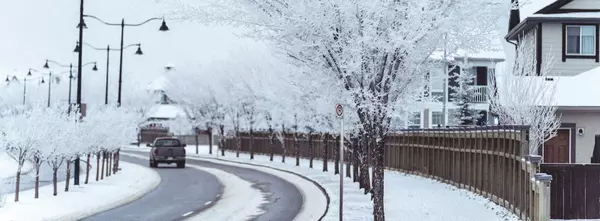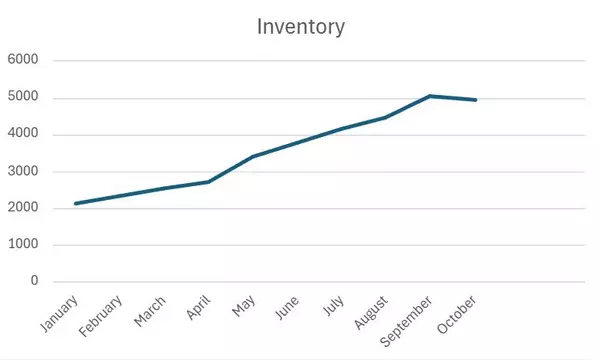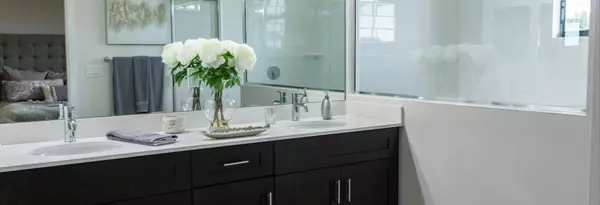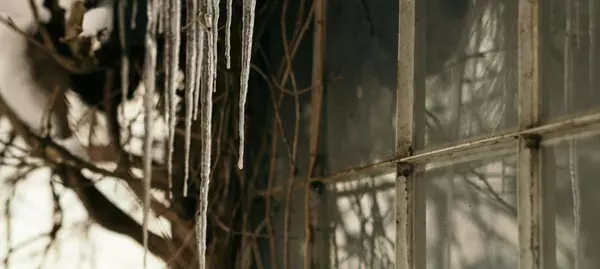
How to Winterize Your Calgary Home
As winter approaches, preparing your home for Calgary's harsh weather is essential. Follow these steps to keep your home warm, safe, and energy-efficient. 1. Seal Windows and Doors Check for drafts: Inspect all windows and doors for air leaks. Caulk and weatherstrip: Apply caulking around window frames and add weatherstripping to door thresholds to prevent cold air from seeping in. 2. Inspect and Clean Your Furnace Schedule a professional inspection: Ensure your furnace is working efficiently by having it serviced before the first cold snap. A professional can clean the filters, inspect for leaks, and ensure it's ready to heat your home all winter long. Change furnace filters: Clogged filters make your furnace work harder, reducing its efficiency. Replace filters every 1-3 months during heavy usage. 3. Clean and Inspect the Chimney Hire a chimney sweep: If you use a fireplace, a clean chimney reduces the risk of chimney fires and ensures safe ventilation. Check for cracks: Inspect the chimney structure for damage or blockages, which could interfere with proper airflow. 4. Prepare the Roof and Gutters Clear the gutters: Remove leaves and debris from gutters to prevent ice dams from forming, which can cause leaks and damage. Inspect the roof: Look for loose or missing shingles. Repair any damage to prevent water infiltration during snowstorms. 5. Watch for Mice Seal Entry Points to Keep Mice Out: As the weather gets colder, mice look for warm places to nest. Inspect your home's foundation, walls, and around utility pipes and vents for any small holes or gaps. Seal any openings with wire screens or caulk to prevent mice from getting inside. Also, ensure that your doors and windows close tightly with weather stripping to block any potential entry points. Don't forget to check your garage and shed doors as well. You don't want to find your shed full of mice in the spring. 6. Reverse Ceiling Fans Change fan direction: Set your ceiling fans to rotate clockwise to push warm air down and improve heating efficiency. 7. Check Smoke and Carbon Monoxide Detectors Test detectors: Replace batteries and test all smoke and carbon monoxide detectors. These devices are critical when using heating systems and fireplaces throughout the winter. 8. Stock Up on Winter Supplies Prepare for emergencies: Stockpile essentials like salt for de-icing, shovels, and snowblowers. Make sure you have enough firewood or backup heating solutions in case of power outages. 9. Protect Exterior Pipes Pipe Insulation: Wrap pipes in unheated areas (basements, attics, and garages) with foam pipe insulation. Pay special attention to pipes near exterior walls. Attic Insulation: Inspect your attic insulation to ensure it’s adequate. Add more insulation if necessary to maintain warmth and prevent heat from escaping. Winterizing your Calgary home will not only save you money on energy bills but also protect your home from potential damage during the freezing months. By taking these steps, you can ensure your home remains safe, comfortable, and efficient throughout the winter season. For questions about buying or selling real estate, contact Ed Black today at (403) 830-8510. Ed BlackREALTOR® Copyright © 2024 All Rights Reserved.
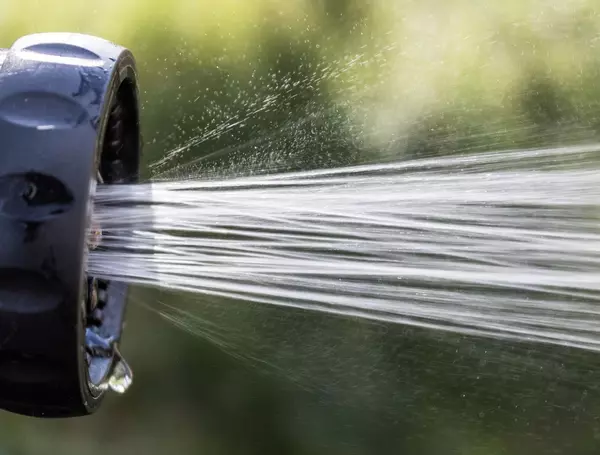
How to Conserve Water: Practical Tips for Everyday Life
Water is one of our most precious resources, essential for life, yet often taken for granted. With growing concerns over water scarcity and the environmental impact of water wastage, it’s crucial to adopt habits that conserve water. Whether at home, work, or in the community, small changes can make a significant difference. Here are some practical tips to help you conserve water in your daily life. 1. Fix Leaks PromptlyIdentify and Repair LeaksLeaks can account for a significant amount of wasted water. Regularly check faucets, toilets, and pipes for any signs of leaks. A small drip can waste up to 20 gallons of water a day. How to Check for Toilet LeaksAdd a few drops of food coloring to your toilet tank. Wait 10 minutes without flushing. If the color appears in the bowl, you have a leak that needs fixing. 2. Upgrade to Water-Efficient FixturesInstall Low-Flow Showerheads and FaucetsLow-flow fixtures reduce water usage without compromising water pressure. These can save a family of four up to 2,700 gallons of water per year. Use Water-Efficient ToiletsConsider replacing old toilets with high-efficiency models that use significantly less water per flush. Dual-flush toilets offer the option to use a full or half flush, further conserving water. 3. Modify Daily HabitsShorten Your ShowersReducing shower time by just a few minutes can save gallons of water. Aim for showers under five minutes. Turn Off the TapDon’t let the water run while brushing your teeth, shaving, or washing your hands. Use a cup to rinse your mouth and turn off the tap while lathering. Use Dishwashers and Washing Machines EfficientlyRun these appliances only with full loads. Opt for shorter cycles and use the eco-friendly settings when available. 4. Smart LandscapingChoose Native PlantsOpt for drought-resistant and native plants in your garden. These require less water and are more resilient to local climate conditions. Water WiselyWater your garden early in the morning or late in the evening to reduce evaporation. Use a soaker hose or drip irrigation system to target the roots directly. Mulch Your GardenMulching helps retain soil moisture, reducing the need for frequent watering. Organic mulches like wood chips or straw are excellent choices. 5. Harvest RainwaterInstall Rain BarrelsCollect rainwater from your roof using rain barrels. This water can be used for gardening, washing cars, or even flushing toilets. Use Permeable SurfacesIncorporate permeable materials in your landscaping, such as gravel or permeable pavers, to allow rainwater to seep into the ground, replenishing groundwater supplies. 6. Educate and AdvocateSpread AwarenessEducate your family and friends about the importance of water conservation. Small collective efforts can lead to significant water savings. Support Water Conservation InitiativesGet involved with local and national water conservation programs. Support policies and initiatives that promote sustainable water use. Conserving water is not just about making sacrifices; it’s about adopting smarter habits and making informed choices that benefit both the environment and your wallet. By implementing these practical tips, you can play a crucial role in preserving our precious water resources for future generations. Remember, every drop counts! For questions about real estate, contact Ed Black today at (403) 830-8510. Ed BlackREALTOR® Copyright © 2024 All Rights Reserved. This is not intended to solicit buyers or sellers currently under contract with another brokerage.
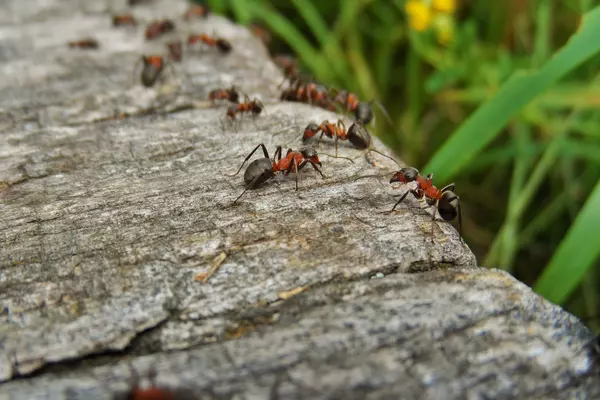
Effective Home Remedies to Get Rid of Ants
Ants can be an unwelcome guest in our homes, especially during warmer months when they're actively foraging for food. If you’ve noticed these tiny invaders trailing through your kitchen or pantry, it’s time to take action. While there are numerous commercial ant repellents available, you can also use simple, natural ingredients to create effective ant baits at home. In this blog, we'll explore two proven recipes that can help you tackle an ant problem without harsh chemicals. Recipe 1: Sugar-Borax SolutionOne of the most effective homemade ant baits involves a mixture of sugar and borax. Borax (sodium borate) is a natural mineral that is toxic to ants but relatively safe for humans and pets when used properly. Ingredients:1/2 cup of sugar1.5 tablespoons of borax1.5 cups of warm waterInstructions:Mix the Ingredients: In a mixing bowl, combine the sugar, borax, and warm water. Stir the mixture until the sugar and borax are completely dissolved. The warm water helps the sugar and borax dissolve more easily, creating a uniform solution. Prepare the Bait: Pour the solution into small containers or soak cotton balls in the mixture. These will serve as your ant bait traps. Place the Traps: Place the baited containers or cotton balls near ant trails, entry points, or areas where you’ve seen the most ant activity. Ants are attracted to the sugar and will carry the borax-laden bait back to their colony. Monitor and Replenish: Check the bait stations regularly and replenish the mixture as needed. It might take a few days to see a significant reduction in the ant population. Recipe 2: Sugar-Borax Ratio MixAnother effective ant bait recipe uses a simple ratio of sugar to borax. This method is flexible and can be adjusted based on the severity of the infestation. Ingredients:3 parts sugar1 part boraxInstructions:Mix the Ingredients: In a small container, mix three parts sugar with one part borax. For example, if you use 3 tablespoons of sugar, you should mix it with 1 tablespoon of borax. Create the Bait: Sprinkle this dry mixture directly along ant trails or near their entry points. Alternatively, you can dissolve the mixture in water to create a liquid bait similar to the first recipe. Place the Bait: If using the dry mixture, spread it lightly in areas where you’ve observed ants. If using the liquid version, follow the same steps as in Recipe 1 to prepare bait stations. Monitor and Adjust: Keep an eye on the bait stations and trails. Adjust the placement as needed to ensure the ants are finding and consuming the bait. Tips for Success 1. Keep it Safe: While borax is less toxic than many commercial pesticides, it’s still important to keep it out of reach of children and pets. Place bait stations in areas where they won’t be disturbed. 2. Be Patient: Ant colonies can be large, and it may take a few days to a couple of weeks to see a significant decrease in ant activity. 3. Clean Up: Ensure that your home, particularly the kitchen, is clean and free of food debris. This will make the bait more attractive to the ants. 4. Seal Entry Points: Once you’ve dealt with the ant infestation, take steps to seal any cracks or openings in your home to prevent future invasions. By using these simple, homemade ant baits, you can effectively reduce and eliminate ant colonies in your home. These methods are not only cost-effective but also environmentally friendly, allowing you to manage pests without resorting to harsh chemicals. For questions about real estate, contact Ed Black today at (403) 830-8510. Ed BlackREALTOR® Copyright © 2024 All Rights Reserved. This is not intended to solicit buyers or sellers currently under contract with another brokerage.
Categories
Recent Posts
